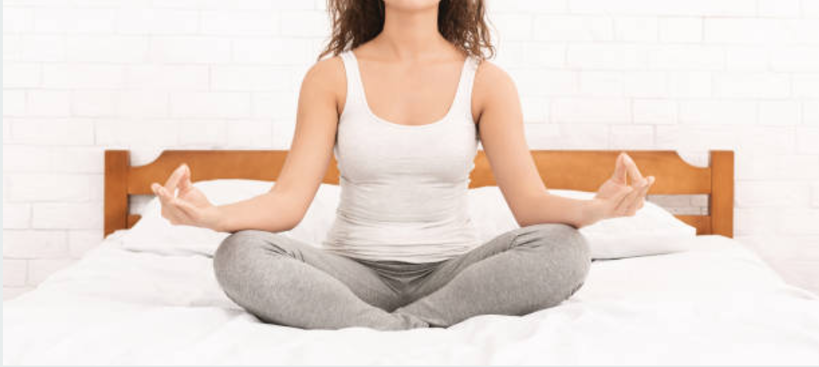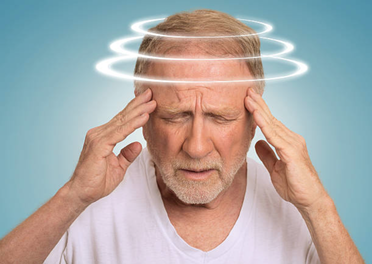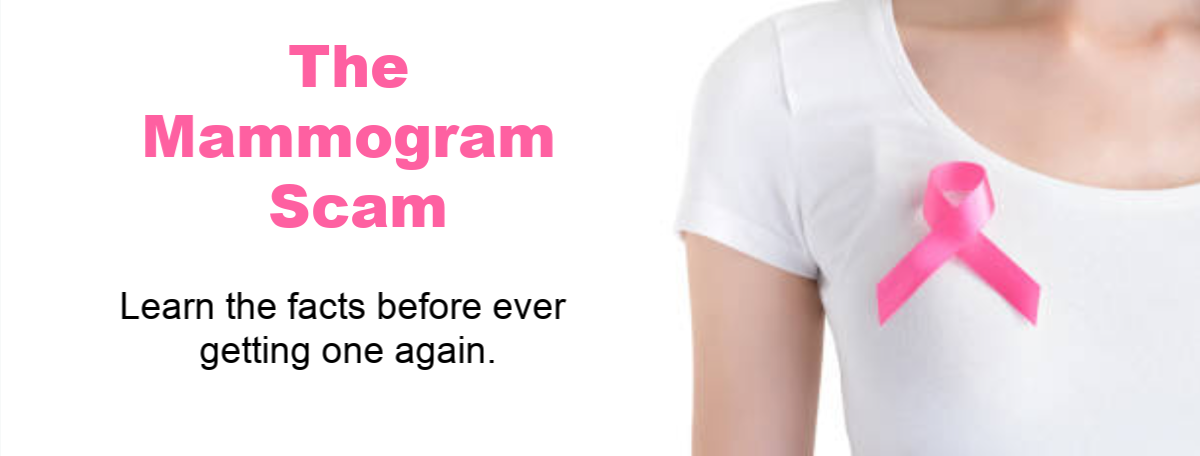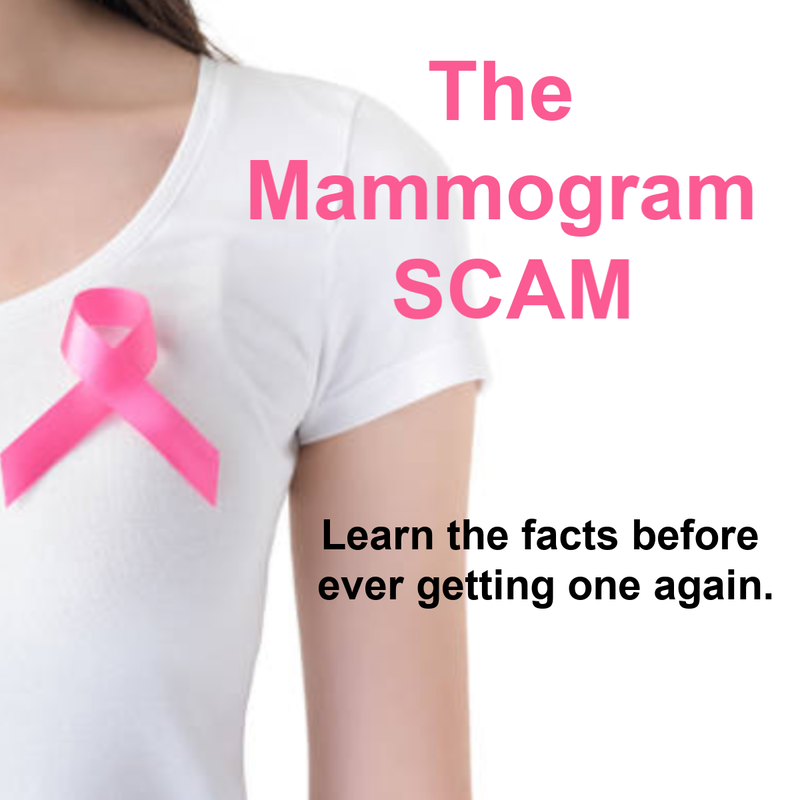Clinically Balanced | Natural Health Blog | Medical Alternatives
 It’s all about balance. That’s why things don’t work sometimes. Diets, exercise, your chili recipe. Balance. You need the yin and the yang. Nature made it this way for a reason. You will drive yourself nuts otherwise, or lead yourself down a very unhealthy path. Be careful not to become obsessed with making things perfect. I did this when I first learned about organic, healthy products. I never wanted my babies to ever bathe in soap containing sulfites, parabens, or artificial colors again. I became a nervous wreck. So guess what? All the craziness that went into making sure my children had the most wholesome food and chemical free products on their skin made me a stressed-out Mom. In the end the kids felt my stress, and therefore were stressed themselves. Let me tell you first hand. IT’S NOT WORTH IT! Do everything in moderation. Start slow. Work your way up. Yes, it’s true organic foods and chemical free products are important. But, if you go all gung-ho on replacing every single product in your home and empty your artificially flavored refrigerator two things will happen; you will drive everyone around you crazy, and you will also become discouraged. Take it from me. You won’t become a pro overnight. Things like this take time. Time to learn, and time to let things process in your brain. The first thing you can do is just adding healthier options to your refrigerator. You can still get the junk, but by adding healthier options you’re getting yourself more familiar with the healthier products out there and which ones you like. You don’t want to go hungry in case you realize you hate tofu and kale. No problem. Try a few more options next grocery visit. Another great way to start is by juicing. Just this simple change can have a dramatic affect on your life. There are plenty of great recipes for juicing. My go-to: 3 sprigs or so of curly parsley and 3 sprigs or so cilantro, a 2 inch chunk of beet, an apple, 1 or 2 celery stalks, 1 inch chunk of fresh ginger, one third of a lime, one big handful of spinach, 3 romaine lettuce leaves, and 3 or 4 big carrots. Heaven. Next thing to do is just start checking the products you currently use. Look to see if they contain sulfites, parabens, and other chemicals that you wouldn’t want on your body. This can be a difficult area of concern. The options are endless, and not all chemical free products are made the same. I’ve spent hundreds of dollars figuring out which products I like, and which ones I don’t. The EWG (Environmental Working Group) is a website that does the work for you concerning what ingredients are in your product, whether you’re talking about makeup, sunscreen, or whatever is in your bathroom drawers. However, they DON’T give you recommendations on which you’ll like. This is where the balance comes in. Forgive yourself for using aluminum-laden anti-perspirant until you find something that works, or your favorite smelling lotion on date night. Life is about living. We all die eventually. No matter how many organic products you have in your refrigerator. Just do your best. Try avoiding that can of soda every other day, or increasing your intake of salads. Slow and steady is best. Elaine Gorski
0 Comments
 "If you are depressed you are living in the past. If you are anxious you are living in the future. If you are at peace you are living in the present." -Lao Tzu Are you or someone you know battling depression? It can be heart- wrenching and difficult to say the least. In this article, my wish is to bring hope to a hopeless illness and get those suffering back on their feet. What does it take? Many times it comes down to being in the present and re-training your busy mind to adopt a new way of thinking. This is no small feat! Be forewarned. I’m going to be straightforward with this and no sugarcoating. The only way to cure depression is through hard work; taking the responsibility of health and well-being into your own hands. Depression is very difficult. Why? In a strange way, depression causes physical pain and feels good all at the same time. Dwelling in sadness can be addictive. It triggers the release of some of the same chemicals associated with addictive drugs. Whether we realize it or not, negative emotions and old patterns feel safe. They are familiar. Getting out of depression will take determination and daily work, but not to fret; baby steps. You will need to build new pathways in your mind and stay off the old ones. Eventually the new pathways will be well worn and the old pathways forgotten. The strategies listed, if done daily, can get you on the road to recovery. The more strategies used daily, the quicker you will feel relief. You will notice there are no pharmaceutical drugs involved in the healing of your mind. Pharma drugs block central lines of energy that are necessary to improve your health. Many of the drugs prescribed for depression have side effects that can make you more depressed or even suicidal. Stay away from them as much as possible. If you follow the daily protocol, the hope is that everyday gets easier and easier. Stay out of the negative thinking which is habitual. Re-train your brain. These suggestions also works for grief, and heartbreak. A note about suicidal thoughts: Suicidal thoughts are never normal. Depression can be painful. Seek professional help if suicidal thoughts become part of the situation. Keep in mind that prescription antidepressants can all cause depression to deepen, triggering suicidal thoughts and actions in previously non-suicidal people. Keep careful tabs on any loved ones started on antidepressants. Daily Protocol Suggestions: 1. No alcohol. Zilch. Alcohol is a depressant. You will feel depressed for several days after one glass. It's not worth it. Right now concentrate on getting better. 2. Give yourself a time limit to sulk, if needed, but give it a time frame. The first day you might give yourself the whole weekend. The second day, you might need 24 hours. The third day might be 10 minutes. Try and reduce each pity party, and don't allow yourself a minute later. Get up and get moving after PRE-DETERMINED time is up. 3. Solfeggio frequencies, binaural beats, and/or isochronic tones: Listen daily for a minimum of 20 minutes. Use headphones for binaural beats. Turn it up until you "feel" the vibration in your body. The point of this is to change the frequency the unhealthy body is vibrating at. Did you know the galaxy sings? NASA has discovered the constant symphony of strange and interesting sounds coming from space. Earth itself has a frequency of 528 Hz. You can find all of these on YouTube for certain illnesses. Search for "depression". 4. Emotional Freedom Technique (EFT) or "Tapping" - EFT works on acupuncture points on certain meridian channels by reprogramming neurological pathways. By tapping on these acupuncture points negative thoughts and emotions are disrupted so that new, healthy thought patterns can be created. 5. Get away from negative friends. Distance yourself from people that love to talk about problems. Relationship problems? Stay away from people that talk negative about their significant other and complain about their daily life with them. Meet up with people who have healthy, happy relationships and that strive to better their connections. Good friends matter. Laughter is the best medicine! 6. Positive affirmations. Write at least 15 post-it notes of positive affirmations and stick them throughout your home where you would see them constantly. Seeing these positive affirmations increase your vibration and reminds you of your worth. Examples of phrases to use: I am worth it. The best is yet to come. I love my life. I am strong. I am healthy. I am blessed. I can get better. 7. Take a walk. Take a walk outside everyday for 5-20 minutes; baby steps. Fresh air helps de-block the system and removes "ick" from the body. Nature rebalances our system and raises our vibration. 8. Meditate. Meditate for 20 minutes every day. This can be done with the frequencies, tones, or binaural beats. Indian Flute music is great for this. Focus on gratitude to counteract the negative emotions associated with depression. Grace will follow. 9. Eat right. Putting junk into your body during this time will make you feel low and lousy. Eat lots of vegetables and "real food". Reduce/eliminate sugar and processed food. This is a must! 10. Take magnesium. According to studies, taking 248mg of magnesium every day has been shown to make a dramatic difference in depression symptoms. 11. Use essential oils. Diffusing or rubbing in essential oils (diluted) will raise your vibration and smells good too! 12. Vitamin D. Vitamin D is actually several different compounds. Be sure to take a Vitamin D3 supplement, especially during the long dark winters for those in the Northern Hemisphere. Get plenty of healthy sunshine when you can. 13. 5-HTP, L-Tyrosine, L-Theanine, and CBD Oil. These supplements help restore balance to the brain's chemistry. 14. Stop yourself from negative thoughts. It's a bad habit. When you find your brain is saying mean things to yourself, make a conscious effort to counteract it with a healthy phrase. Love yourself, and love yourself some more! 15. Find activities that YOU love doing. Take the time to find out whom YOU are and what YOU love to do. Allow yourself time to play. It's all about balance. 16. Trust in God. Throw your hands up and give God the reigns to your life. Know that he has your best interest at heart; always. As your angels to help you too. They are there waiting for you to ask for help. Put them to work. You can, and will, beat depression! Make the decision. You have to be sick and tired of being sick and tired. More detailed information is contained in our book, Clinically Balanced Guide to Depression. Find it on our "Books" page! Elaine Gorski  Vertigo: Is it really the crystals? When we are young we played. We flipped our bodies over, did somersaults, went on roller coasters, and got our heads in every imaginable position. As we get older, those activities usually cease to exist. We are caught sitting at our computers with our heads in a stationary position for most of the day. Either our heads are upright working and interacting with our environment, or horizontal while sleeping. We don’t do as many cartwheels in our 50’s, or getting into pretzel-like positions as we used to. This, my friends, is the problem. The body is meant to move. It’s meant to be flexible and stretched. How many of us cannot go on roller coasters anymore, or even swing on a swing because we get dizzy? It’s because we’ve allowed our bodies to become rigid. Our brain cannot decipher those movements anymore because it’s been so long since we’ve done them. This is where benign paroxysmal positional vertigo (BPPV) comes into play. The brain may need re-calibration. It may not be “crystals” that somehow move around your ear like we’ve been told. If that were the case gymnasts, children, and those that frequent roller coasters at any age would be acquiring this “dizzying” illness on a regular basis. No? Dr. Matthew Evenhouse has helped thousands of patients looking for relief from vertigo symptoms while working in the ER. His experience is telling him there is more to the story. Why is it that many patients find full recovery or at least partial relief from simple maneuvers that put the head in awkward positions? Is it because the canaliths magically moved back to where they should be, or maybe only a few made it? It’s not plausible to say this can be the only cause, especially when some people get better on their own without any treatment. It’s been said that 50 to 70 percent of BPPV cases are idiopathic, meaning the cause is unknown. Could re-calibration of the brain be the missing piece? Empirical evidence is showing we need to get our magnetic brains into all positions more. It may need re-calibration and re-familiarize itself to where the limits are. That’s why the Epley and Semont maneuvers may work. They put the head in tilted positions and roll to every extreme. The “barrel roll” technique has been said to work on 90 percent of patients. Why is it then that patients may need to do the exercises more than once? Well, it may take repetitions for the brain to figure out where the body is “in space”. How to prevent this form of vertigo? Easy. Play. A word of caution, however. Start small. Maybe start by stretching your head and neck into slow, circles; chin to chest then work your way over to the side, then back, then to other side, and back to chin to chest. Or, start swinging on a swing. You don’t have to go very high, just a little bit at first. Work your way up. If we start allowing our bodies to move the way they were meant to, the chances of acquiring BPPV can dramatically decrease. Other causes of vertigo are: viruses and bacteria, medications, Meniere’s disease, muscle spasms in the neck and shoulders, or migraines. See my blog post HERE for more information and treatments for vertigo. If you are over the age of 65 and the BPPV maneuvers do not help, it’s best to check with your doctor. Vertigo in older adults can be a sign of other health issues. Elaine Evenhouse Before rushing to schedule your next mammogram it's important to know about the most recent research. Studies are saying that mammograms may not be the best choice for breast health. The amount of radiation given to the body can actually increase your risk of getting breast cancer, especially if you’re getting a mammogram on the current recommended schedule. Mammograms expose your delicate cells to harmful radiation! I will hear the debate that "background radiation" is worse than mammography. I say, ANY and ALL radiation is harmful to the body. Why add extra radiation that is not in your best interest if there are other options?
We’ve been grilled for years on checking our breasts every month, and getting yearly mammograms. Guess what? It hasn’t increased survival. Do you know what does? Prevention. If you read my posts you know I’m a firm believer in “primum non nocere” or first, do no harm. Mammograms are causing harm to your body that isn’t necessary to reduce breast cancer. Unlike wearing highly profitable “pink” ribbons for a lobbied agenda, I’ve compiled information that has been proven to work and actually does what it intends to do, which is to save lives. Breast Cancer over-diagnosis and over-treatment are the rule. Unnecessary breast cancer treatment occurs at a ratio of 10 to 1 and results in unacceptably high levels of over-diagnosis which leads to millions of unnecessary treatments worldwide. It also leads to tremendous suffering, disability, and expense brought on by the unnecessary surgeries, radiation, and chemotherapy treatments. A Cochrane review performed by researchers in Denmark describes the tragedy of over-diagnosis and over-treatment with a simple numerical example. If 2000 asymptomatic women are screened for breast cancer using mammography, 1 of those women will benefit from cancer treatment. This is good. However, 10 other women in that group will undergo unnecessary treatment including mastectomy, radiation and chemotherapy based on the limitations of the mammogram. The researchers also noted that 200 women in the screening group will experience a false positive result and endure the emotional strain of additional testing required to disprove the initial error. Altogether, 30% or more will endure some level of unnecessary testing and treatment in order to save 1 woman. Clearly, we need a better way to diagnose malignant breast tumors without harming so many other women. The first thing all women should do if they haven’t yet is get a thermography scan, or even better a NLS bioresonance scan (see HERE). Thermography scans use a digital infrared thermal imaging to detect and record infrared heat from the surface of the body. Abnormal cell clusters that lead to breast cancer have an increased blood supply that elevates the temperature of the skin over that area. A thermography scan can catch breast cancer approximately 8 years before a lump is even present! The NLS (non-linear system analysis) scan detects cell changes at a quantum level. If this sounds too science-fiction for you it's not. We use this technology already in MRI or EEG tests. NLS bioresonance is used without the negative side effects that mammograms or x-ray technology gives. Just like every other disease prevention strategy, diet and lifestyle changes are required. This is imperative for health-maintenance and healing. Decrease or eliminate as many toxins that enter the body. This includes emotional or physical stress. Next, adding the following supplements to your daily intake has been shown to reduce the risk of breast cancer: Vitamin D3 - Increasing your vitamin D3 daily has been shown to reduce breast cancer by 77% within 4 years. Turmeric – Increasing turmeric into your diet (or through supplements) can reduce the risk of breast cancer by 50%. Flax seeds – 3 Tbs for 3 weeks or more. Decreased the size of breast cancer tumors in every woman tested. Animal-based Omega 3 fats – (example: krill oil) One thing to look into is your iron levels – Too much iron in post-menopausal women can increase risk. If you have breast cancer and post-menopausal, have your Ferritin level checked. We’ve heard it before, but yes, self-checks are important. Check your breasts for any changes. Get to know what they feel like and have awareness for anything new. This list includes:
If you find changes in your breast give your doctor a call. If they agree an area is suspicious they will send you to get an ultrasound. If the ultrasound detects something a biopsy is the next step. A bit about radiation – In Dr. Christine Horner’s book, “Waking the Warrior Goddess” she mentions “a European study published in 2012 found that when those who have the genetic predisposition for breast cancer (BRCA1 or BRCA2 gene mutation) are exposed to any diagnostic radiation before age thirty, their risk of breast cancer increases by 90 percent." The study also found that a history of mammography before age thirty raised the risk by 43 percent. "A newer type of mammogram touted to be much better at detecting breast cancers, called tomosynthesis, takes a 3-D image of the breast. You definitely want to avoid this type of mammogram because it uses three times more radiation than the standard type!" It’s important to stay aware to the health of your breasts. Does deodorant with aluminum cause breast cancer? The truth is that the toxins in anything can cause bodies to react with abnormal cell development. Just like my body reacts to pineapple, yours may not. Nothing is a “cure-all”. Remember that. Every body requires different things. The point is just to be aware of your body and subtle changes that happen when your body is in dis-ease. A plethora of information about cancer is in our new book, the Handbook of Home Remedies: Effective Natural Health Tips for Autism, Blood Pressure, Cancer, Depression, Pain, and More. Find it HERE. Elaine Evenhouse  Fevers are the body's defense weapon. They are not to be feared. Giving a Tylenol to bring down a fever is hurting the body's immune system and can cause damage to the body. First and foremost, LET THE FEVER RUN ITS COURSE. It has a job to do! Bringing down a fever can prolong an illness or infection. I've heart the phrase, "watch the child NOT the temperature." My thought is to watch both. I've had a nephew go to the doctor with a low temperature but acting very ill. By the time he sat on the table for the nurse to check him out his temperature was at 106.7. Yes, that is correct. She thought her thermometer was broken and got another one. You can imagine the urgency to lower his temperature. He was fine, without any known brain damage. So, always watch both; the child and the temperature. I'm not saying to be in fear of rising temps, but to check if you notice a change in the child, or at least once every hour or so. Only interfere with a fever if it's causing changes in mental status, inconsolable distress, or severe malaise. If the child is playing with toys, or watching movies, there is no treatment needed. Let the fever be. However, if the child is miserable, crying, and cannot be calmed down then by all means give them some support. Febrile seizures DO NOT occur because of the high temperature, but from the rapid rise in temperature which comes with certain illnesses. A 103/104 degree temperature is considered normal with certain viruses (Hand-foot-mouth disease, influenza, etc.) Febrile seizures are usually not serious or permanent in children between the ages of 6 months and 3 years. Need to bring down a fever? Try any of the following:
When to call the doctor:
**There is no need to disturb a sick child to take them to the doctor unless something is abnormal. Sick children need to rest. Let them sleep in your bed, or couch. Put on their favorite movie, and keep them loved and comfortable. The doctor doesn't need to see them every time they are sick. Elaine Evenhouse  If you have vertigo, or know someone that does, you know how debilitating it can be. Getting through even a few moments is tough, but going through a vertigo spell for months can be something you don't wish on your worst enemy. In this article you'll learn the most common causes of vertigo to date, and treatments that can help you get your life back from this 'dizzying' illness. Also, find a printable version of this information at the end.
It's important to find the root cause of your vertigo to get the best treatment. Your doctor may help you in deciding what is best in your situation. I hope you found this post helpful. If you did, I'd love to hear your story in the comments section below. If you would like a printable copy of vertigo and the treatments mentioned above, click HERE. |
AuthorsElaine Gorski is a licensed occupational therapy assistant and certified holistic health coach. Archives
December 2021
Categories |
DISCLAIMERS:
*These statements have not been evaluated by the Food and Drug Administration.
The products or suggestions listed are not intended to diagnose, treat, cure, or prevent any disease.
Information provided is NOT occupational therapy, nor is it considered medical advice on your condition.
If you are looking for occupational therapy services, please contact an Occupational Therapist for an evaluation.
Take responsibility for your own health. Find answers that work for you.
Look for support groups that share your chronic condition. Many times those with personal experience will share answers they have
found on their journey back to health. The purpose of this website is to guide you to be responsible for your own health. That includes finding the appropriate help when needed.
If you would like to use an article on your site please email us. This content may be copied in full, with copyright, contact, creation and information intact, without specific permission, when used only in a not-for-profit format and credit for author is given. If any other use is desired, permission in writing from the respective author is required.
*These statements have not been evaluated by the Food and Drug Administration.
The products or suggestions listed are not intended to diagnose, treat, cure, or prevent any disease.
Information provided is NOT occupational therapy, nor is it considered medical advice on your condition.
If you are looking for occupational therapy services, please contact an Occupational Therapist for an evaluation.
Take responsibility for your own health. Find answers that work for you.
Look for support groups that share your chronic condition. Many times those with personal experience will share answers they have
found on their journey back to health. The purpose of this website is to guide you to be responsible for your own health. That includes finding the appropriate help when needed.
If you would like to use an article on your site please email us. This content may be copied in full, with copyright, contact, creation and information intact, without specific permission, when used only in a not-for-profit format and credit for author is given. If any other use is desired, permission in writing from the respective author is required.
LEGAL:
© Copyright 2021-2024 Clinically Balanced. All Rights Reserved.







 RSS Feed
RSS Feed